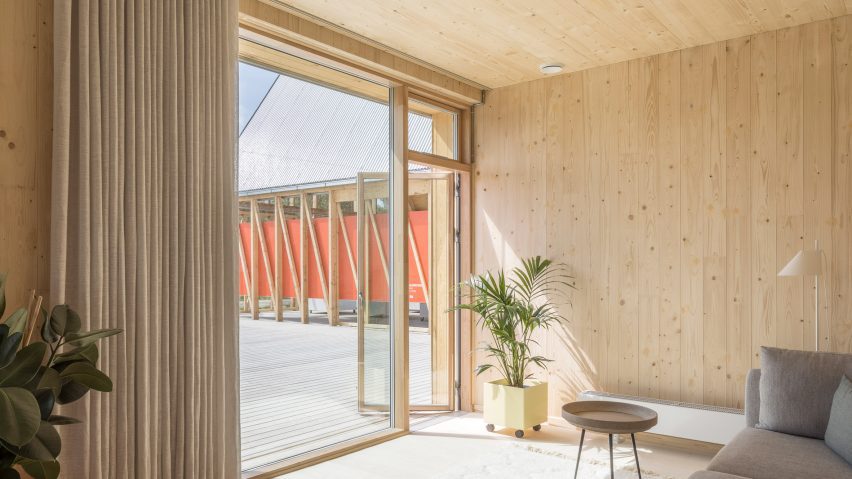Promotion: window manufacturer Velux has created an experimental low-carbon housing development in Copenhagen that is built using existing technology and materials.
Called Living Places Copenhagen, the prototype village is built by Velux in partnership with Danish architecture studio EFFEKT, construction and property consultancy Artelia and civil engineers Enemærke & Petersen. It includes two complete homes and five open pavilions.
As well as low-carbon, the development is designed to be scalable, affordable and commercially viable.
Each material, design and building technique used in the development has been carefully considered and had its projected emissions mapped against the typical Danish reference house.
At 3.8 kilograms of CO2 equivalent per metre squared per year, the CO2 footprint of a Living Places dwelling is three times lower than an average Danish single-family house.
Velux explained that the dwellings are carbon negative through the majority of their lifecycle due to the selection of biogenic materials that store carbon throughout each building's lifetime.
The development includes a timber frame house and a cross-laminated timber (CLT) house with hybrid ventilation and wood and aluminium windows.
The buildings are modular so they are easy to repair, upgrade and disassemble. Outdoor spaces are shared to reduce land use, increase density and encourage socialisation among residents.
"This experimental project aims to show how low carbon housing that is regenerative for the planet can be built using existing technologies – and in a way that does not incur any additional costs in construction and without compromising on quality, architecture and indoor climate," explained Velux.
"Each building component has been optimised for the best constellation of price, indoor climate and carbon footprint with a special focus given to the envelope of the building where significant CO2 savings can be achieved."
"If we were to build all single-family houses and row-chain and double houses, like Velux Living Places we could save approximately one million tons of CO2 each year," it added.
Velux reports that homes built on the Living Places principles can be built at Danish market cost price, whether as single-family homes or as row houses or multifamily units.
The project leaders are currently in dialogue with stakeholders including investors, developers and builders to license the concept into scale. The next step involves building the first full-scale Living Places community outside Copenhagen in 2024/25.
As an official partner of UNESCO-UIA World Capital of Architecture 2023 in Copenhagen, the prototype village is currently hosting a programme of debates and activities designed to drive and accelerate change on the role of buildings in synergy between housing and society.
Build for Life forms part of Velux's wider sustainability strategy, which involves "taking measurable steps toward positive change while focusing on how buildings can help to resolve global challenges with sustainable solutions and practical action". It is aiming to be a carbon-neutral business by 2041.
For more information on Living Places Copenhagen, visit the Velux website.
Partnership content
This article was written by Dezeen for Velux as part of a partnership. Find out more about Dezeen partnership content here.

